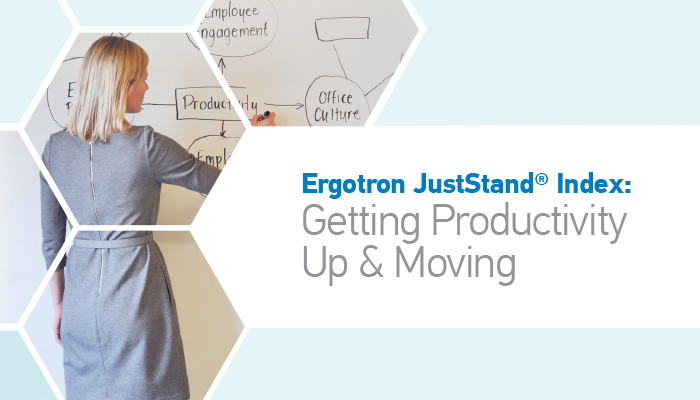At Ergotron, scientific and evidence-based research and data is the foundation of product development. As an extension of this commitment, Ergotron commissioned a survey of 1,000 full-time employees in the U.S. as part of the 2016 JustStand® Index, to uncover how sedentary lifestyles are impacting the productivity, engagement and well-being of employees. The report analyzes how sitting impacts different aspects of the workplace – here are the key findings:
- Productivity: Although cyberloafing, a term used to describe browsing the internet and social media, has gotten a lot of attention for its impact on productivity, it turns out that restless employees are 61 percent more likely to get up and move around than browse the internet or social media (39 percent). While taking regular breaks for movement is important, the data suggests that employees are being driven away from their desks to alleviate restlessness and physical discomfort from prolonged sitting.
- Office culture: Over 60 percent of employees dislike or even hate sitting, yet nearly 70 percent do it all day, every day. A happy, healthy employee is more likely to be a productive and engaged employee — and one that stays with your company — yet the majority of our office spaces aren’t designed with that in mind.
- Employee health: With the influx of wearable technology people are more health-conscious than ever before, but may have been lulled into a false sense of fitness and health. Sixty-two percent of employees indicated that they get the recommended 2.5 hours a week of exercise, which is perhaps why less than half of the office workers surveyed think they are personally at risk for sitting disease. However, sitting too much at work, despite physical activity undertaken throughout the week, is detrimental to mind and body.
- Wellness programs: Despite health and wellness programs in corporations being a stated priority, only 23 percent of employees are aware of a wellness program at their company and of that population, only 35 percent of these programs offer alternative workstation as a benefit option to help avoid prolonged sitting.
Since launching the first JustStand Index in 2013, more attention has been given to the dangerous metabolic effects of sedentary lifestyles, or sitting disease as it is less commonly known. Although awareness is for sitting disease has doubled (from 7 to 15 percent), it has yet to achieve widespread understanding and sitting is still the most common posture in the workplace.
The landscape of work has changed drastically – with a new generation of workers and innovations in technology – but, for the most part, employees still remain in office chairs. And many of them aren’t happy about it. And while 86 percent of people believe that prolonged sitting increases the risk of early mortality, only 48 percent of people believe they are personally at risk. This demonstrates the need for further education and conversation throughout the business community.
Over the next several weeks, we’ll be exploring these key findings in more detail on the JustStand MoveMore blog. In the meantime, visit www.juststand.org/jsindex to download the full eBook.



